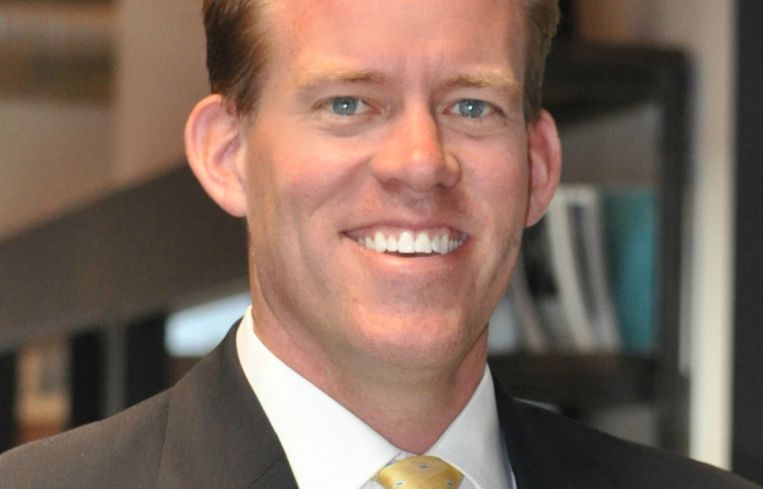Jim Dillavou Talks Lincoln Property Retail Expansion at ICSC
By Mark Hallum May 21, 2024 5:39 pm
reprints
Developer Lincoln Property Company is planning a big expansion into retail, with $400 million locked and loaded for the right opportunities.
That means Jim Dillavou, national head of retail investments and retail capital markets for Lincoln, is putting a lot more on his plate. Lincoln’s current assets under management span 550 million square feet, but only 11 million square feet of that is retail.
However, Dillavou hopes to grow that by targeting acquisitions of grocery-anchored retail buildings across the country and also developing its own properties.
Commercial Observer caught up with Dillavou, who co-founded Paragon Commercial Group in 2009, which later became Lincoln’s West Coast retail investment partner, at ICSC Las Vegas on Monday where he spoke about its retail strategy and why after 60 years in real estate the Dallas-based landlord is looking at retail with fresh eyes.
This interview has been edited for length and clarity.
Commercial Observer: What kind of retail properties is Lincoln targeting with this $400 million fund?
Jim Dillavou: We’re super focused on necessity retail to the exclusion of everything else. We expect that fund to close this year. And, right now, we’re building out the team to have all the systems and support in place we need to own and operate those centers.
So it doesn’t sound like a lot of money, but $400 million leveraged at 60 percent is a billion dollars in buying power, and our average deal size, when you’re talking about neighborhood grocery shopping centers, is more like $40 million to $70 million.
The asset class itself has performed extremely well through the e-commerce narrative and COVID, through the death of retail, through all of those headwinds. So capital markets and institutions are trying to figure out how to get into the asset class right now, and one of the single biggest impediments towards getting into the asset class right now is the deal size.
Why is Lincoln only now expanding its retail assets under management?
The reason for that is that initially we had this retail apocalypse where everyone was scared that retail was failing because everything was going online and e-commerce was going to eat brick and mortar. That didn’t happen, but as a result, capital was very fearful of that happening and they moved out of the business.
Brick-and-mortar and e-commerce have reached an equilibrium. One needs the other. The buzzword is omnichannel.
When an e-commerce native brand opens a brick-and-mortar store, within a three-mile radius, their sales go up 11 percent. There are studies out there showing that the two are symbiotic.
What gives Lincoln the edge over other investors deploying capital across an asset class where individual deals are small?
The Lincoln platform is so big and broad — 30 offices nationally and 3,200 people — we have all the resources, so we can deploy that capital pretty efficiently because we have local market expertise in all of these places all over the country already.
So we can sit in Dallas with our team and be able to pick and get local market analysis within 24 hours. Then, if it’s something we want to dig further into, we can take the acquisition team out and seal the deal.
Eighty percent of the fund will be deployed west of Denver, including Texas, particularly Salt Lake City, Boise, California and Arizona. Twenty percent of the fund will be deployed east of that, and that is purely a product of the fact that that is where most of our team members are located. It’s not because we don’t like those assets.
There has been talk at this conference that consumer spending and debt may prevent retail from continuing in its current trajectory. Is that something you’re preparing for?
One of the reasons why we like necessity retail is that it’s pretty insulated from the ebbs and flows that can affect discretionary retail. If you look at historical sales at neighborhood grocery-anchored shopping centers, they’re relatively stable.
You’re going to go to the grocery store whether your income is $100,000 or $50,000. You may buy more or you may buy less, but if the economy is good or bad, you’re still going to go to the grocery store.
Then if you merchandise it properly, you’ll probably attract other tenants such as a coffee purveyor, a local restaurant or quick-serve food.
Are you deploying this fund purely into existing assets or are you planning to build where necessary?
Our pedigree is construction. We have full-time retail construction in-house, and I believe construction will be here much faster than anyone is talking about. If you look at the supply-demand curve right now, there just isn’t enough supply and you have all these retailers trying to expand into a very, very limited supply. And the only reason there’s not more construction going on right now is interest rates.
I firmly believe we’ll be seeing a lot more construction in the next couple of years than people are talking about, in specific markets too. There’s ground-up construction in Texas right now. In California, it’s much tougher to make pencil.
Do you have an outline of how much capital will be put toward construction as opposed to existing buildings?
We’re targeting a certain return, and there are lots of different ways to get to that return. The big thing with construction is it’s not very efficient. It takes a lot of horsepower. So we want to be really efficient in building the fund, efficient in executing the business plan. We can do it if we have pre-leased centers which would be much more of a build-to-suit. I would even call it a development deal.
Mark Hallum can be reached at mhallum@commercialobserver.com.


